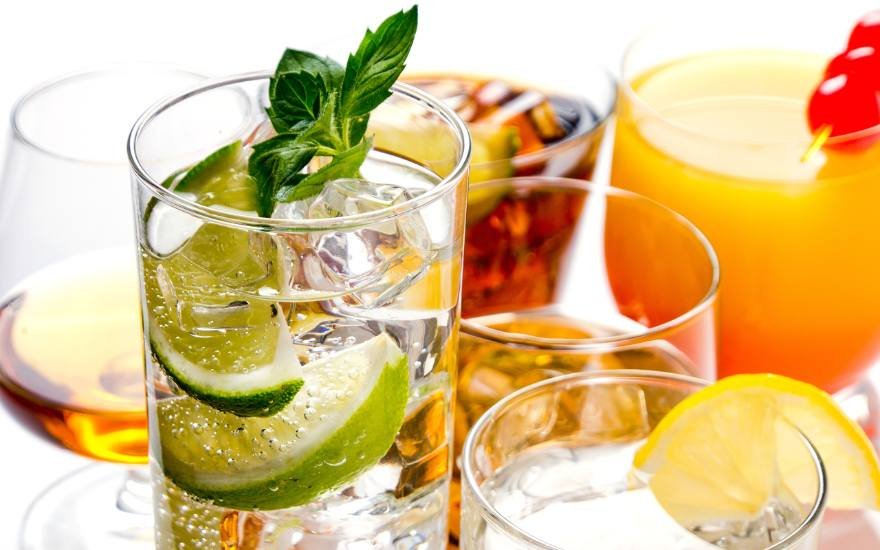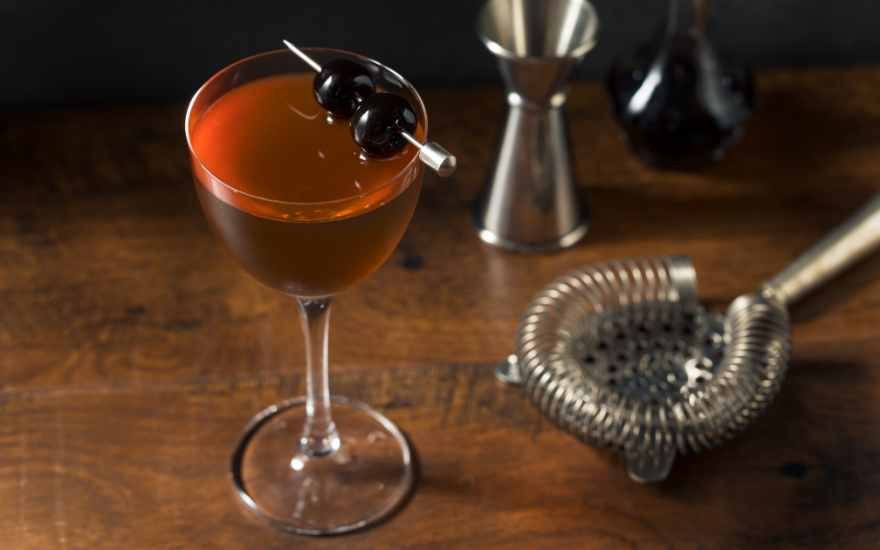With so much effort put into the cocktail itself, it can be tempting to skip over the humble garnish – but don’t! It’s a massively undervalued step in creating a bar style cocktail at home.
Not only does it make a cocktail look so much prettier and more appetising (which can actually affect the perceived taste), but the aroma and flavour make a big impact themselves, especially with delicate and subtle cocktails.
You’ve done the hard work with finding the right ingredients; shaking, straining, whatever it may be – why leave out the final step when it’s so simple? If you’re not sure which garnish works best with your favourite cocktail, then we’ve got a list of favourites below that will elevate your cocktail to that next level.
What is the best garnish for a Martini?
With a Martini, there are two popular routes to go down. The first is olives. Famously used in a Dirty Martini with pickle juice, vodka, and vermouth, it’s also a classic choice as a garnish for a Classic Martini. Olives vary depending on the type, so you can get earthy Kalamata olives, meaty, salty Castelvetranos olives and many more. Avoid stuffed olives! Generally though, they bring a savoury, briny flavour and balance the Martini’s bracing intensity well. If you’re a keen traditionalist, then only use one or three olives – never two! Similarly, if you opt for pickled onion instead then did you know that you’ve made yourself a Gibson Martini?
The other way to go is the twist, usually lemon. This will brighten the gin and enhance the vermouth. Running a twist of lemon around the rim and even glass stem delivers a surprisingly intense hit of citrus aromatics. After that, you can either discard it or drop it into the drink for more flavour. Not as popular but still a great, slightly sweeter option is the orange twist too – but it all depends on personal preference and the spirit you’re using.
What is the best garnish for a Negroni?
Orange peel or wedge is the iconic garnish for a Negroni. Prepare a nicely trimmed orange peel, twist (express) over the glass to release oils and then place it in the glass. It’s a perfect match for the gin botanicals and bitter citrus of Campari. With orange peel, the oilers can be heavy and strong so it’s best to avoid rubbing the rim as it might numb your mouth slightly, throwing the drink out of balance.
What is the best garnish for a Julep?
No surprises here, because by far the most famous Julep is the Mint Julep. Any tall drinks with crushed ice that uses spirit, liqueur wine or fortified wine is a julep, which is why a Mojito is kind of one, but let’s focus on the Mint Julep. Because fresh mint leaves are the only source of mint flavouring in this serve, most of them will be muddled and shaken in the mix. However, these will be crushed within the ice and although they’re hard at work infusing flavour, they won’t be aesthetically pleasing. Save some gorgeous fresh mint for the top, so you get an instant hit of that distinct, cooling, aromatic flavour. Remember, give the mint leaves a gentle tap and rub as you place them so the aromas are released.
What is the best garnish for a Manhattan?
Cocktail cherries used to be a little dodgy tasting to say the least, but for a long time now they’ve been delicious. A sweet Maraschino cherry is the most popular garnish for a Manhattan, but you can also get all kinds of boozy, bright, tart, and sweet brandied cherries that work a treat. It’s the traditional choice, and the syrupy cherry offers another layer of fruity depth.
What is the best garnish for a Flip/Eggnog?
Frothy, creamy, luxurious cocktails like Flips, Eggnog and even fluffy Sours benefit from a shaving of spice. Most commonly nutmeg and cinnamon, a sprinkle on top not only sits beautifully on the cocktail cloud, but also brings out aromatic components. For only the smallest sprinkle, you get bundles of subtle sweetness and warm depth, and it makes dairy smell more appetising. Cinnamon specifically, is one of the few ingredients that brings perceived sweetness without containing sugar!
What is the best garnish for a Daiquiri?
A Daiquiri isn’t always garnished but why not? For sweet, tropical, fruity cocktails like the Daiquiri, fresh fruit is the best garnish. Generally, it’s best to match your fruit with the primary flavour of your Daiquiri to enhance the flavour with freshness.
The original rum, lime juice and sugar need a lime twist to complement the juice in the serve and intensify the citric aroma. But then something like a Strawberry Daiquiri requires real strawberries in the cocktail, so save a couple for a gorgeous garnish. The Hemingway Daiquiri uses a grapefruit wedge, the Coconut Daiquiri often comes with a slice of pineapple, Spicy Daiquiris benefit from a Jalapeño slice, and you can guess what a Watermelon Daiquiri should have.
What is the best garnish for a Margarita?
To salt or not to salt, that is the question. We generally prefer not to in our recipes, but some people love it, and it’s a good example of garnishing the rim of your glass. Both salt and sugar are commonly used to coat the rim in different cocktails, providing a big boost in, well, sweetness and saltiness. The salt brightens the sweet and sour notes, but use it sparingly if you do to avoid unpleasant clumps and an unbalanced drink. It’s also great to add spices in, be that the mellow warmth of cinnamon, or the heat of Tajin (lime, chillis and salt) which is often added to Spicy Margaritas.
There’s a couple of ways to rim the glass. First, if you chill your glass and take it out the fridge, the condensation will be enough to stick to salt as you roll your glass in it. Or, the most common method, take the most popular garnishes (lemon and lime), and coat the rim in citric juice so the granules stick that way. If you’re making it for guests and you’re not sure on their preference, a half and half is always best!
What is the best garnish for an Aperol Spritz?
This is a no-brainer. A slice of orange is perfect for Aperol Spritz, building on the refreshing, zesty profile of Aperol which contains a blend of sweet and bitter citrus. If you’re really into the bitter side of this cocktail, then a slice of lemon in addition can add a nice bright burst, but we’d recommend a small sprig of mint to help ease out those complex herbal scents in Aperol.
What is the best garnish for an Espresso Martini?
This is a good example of a garnish that you don’t tend to eat but remains an essential. The trio of coffee beans poised delicately on the white lid of an Espresso Martini represent health, wealth and happiness, and this cocktail just wouldn’t look the same without them – what are cocktails without their legends, symbolism, and romance. You can eat them, but they can also upset your stomach and aren’t tasty to most people, but without them, it would definitely feel like something is missing.
That’s not where it ends though. Espresso powder can also boost the coffee flavour, and cocoa powder works brilliantly to create a slight mocha tinge. Use the white surface as a blank canvas and use coffee beans and powder to create art.
What is the best garnish for a Gimlet?
The Gilmet began as gin and lime but has now expanded to include variations using vodka and all sorts of citrus and herbal riffs – and these are good examples of some lesser used garnishes that are worth experimenting with.
A classic Gimlet needs fresh lime, no doubt. It brings that fresh hit of lime flavour, and the oils from the lime peel tantalise the nose. But the Cucumber Gimlet is a refreshing, sweetly vegetal twist that demands a skewered cucumber slice. Rosemary is another green garnish that adds so much. Just the faintest whiff can be delightful, and it works brilliantly with the right herbaceous gin.
Grab your skewers and peelers and get experimenting with your favourite garnishes!
Depending on when you’re reading this, you might be in need of some special garnishes for Halloween – well here’s 8 easy to make but surprisingly effective spooktacular garnishes.



















































